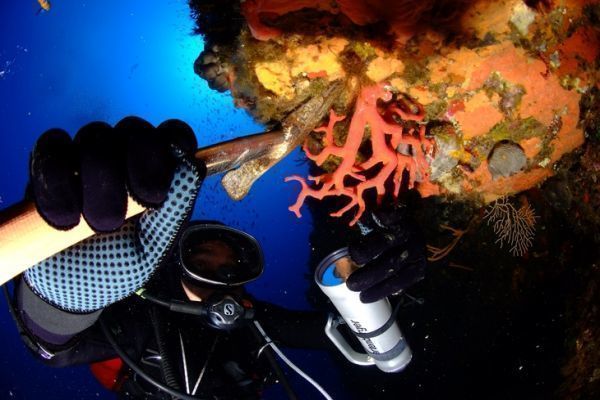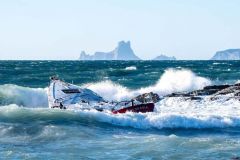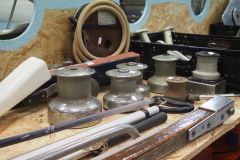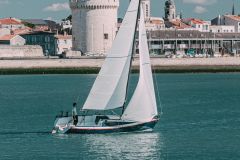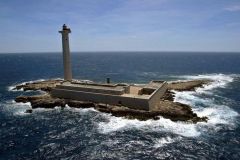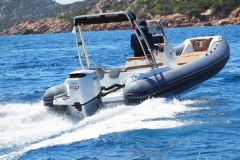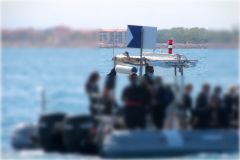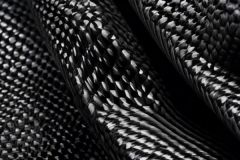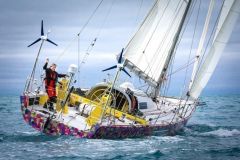At a time when environmental issues are intensifying, the harvesting of red coral in Corsica is subject to strict regulations. Belonging to the 3 kingdoms, Corallium Rubrum, from its Latin name, combines the animal, plant and mineral kingdoms. Contrary to certain preconceived ideas, it is not in danger of extinction.
Unique in the Mediterranean, it remains the only marketable species, supplying the jewelry and pharmacology sectors. An expert in red coral for the European Commission, and a worthy defender of a profession in which he is considered a sentinel, Jean-Philippe Giordano tells us about his passionate profession, on behalf of all Corsican coral cutters.
A bond between man and sea
Jean-Philippe Giordano embodies this intimate bond between man and the sea, a legacy left by his father, himself a diver many years before the name Cousteau resonated in the marine world.
Can you tell us more about the coral reef trade and share with us the experience of diving to harvest red coral? What extraction techniques are used to preserve this marine resource?
This is a professional deep dive, generally between 50 and 120 meters. The dive begins early in the morning, after an hour's boat ride to the fishing site, which is identified by a depth sounder that pinpoints cracks in the continental shelf, particularly the anfractuosities and caves that are sought-after locations.
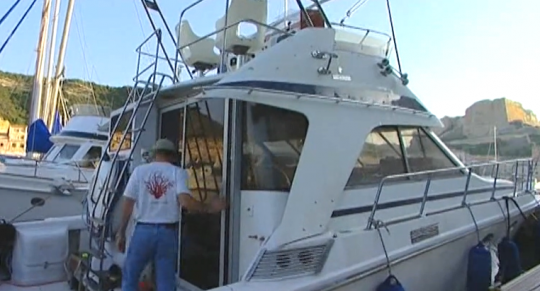
In our profession as coral divers, diving is an elevator to get us to our place of work. We use large cylinders and a regulator. Diving is done with air, then, from 90 meters to 120 meters, helium has to be added. The descent to the bottom takes about 1 minute. I weight my basket with stones, which I release when I see the rocky bottom appear. My harvest begins and lasts about 30 minutes, the time needed to carefully select the coral. I then have to make a slow ascent, respecting decompression stops. This is a dangerous job, and there's no room for tinkering.
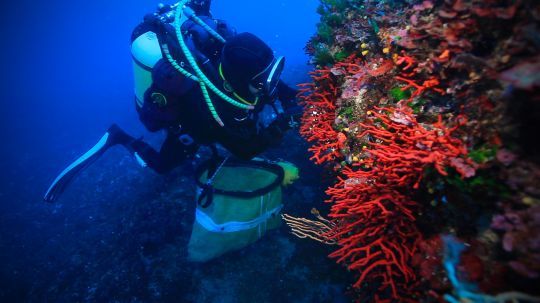
We use lamps for illumination, as there is no light at these great depths. Equipped with baskets around our necks and a hammer, a sort of geologist's ice-hammer, we then cut the coral branches that have reached a certain maturity, with a minimum diameter of 7 millimetres. We prefer to remove the minimum necessary for our subsequent jewelry work, thus preserving young colonies while promoting sustainable, responsible fishing. Our work must be meticulous in order to meet the requirements set by the European Commission, which favors coral growth and preservation. It's satisfying to see good regrowth during our subsequent visits to fishing sites.
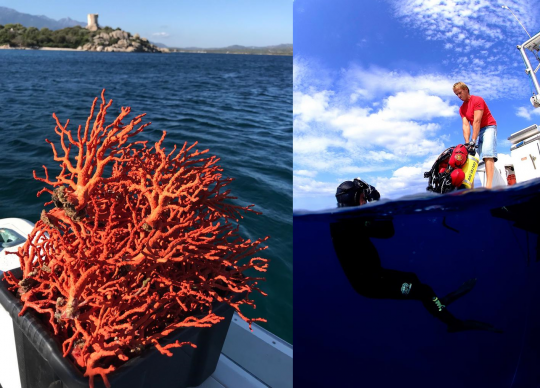
In addition to his trade as a coral cutter, Jean-Philippe Giordano runs several boutiques on the heights of Bonifacio, specializing in jewelry made from carefully selected red coral.
Once dry, the coral is exposed to the sun. It then loses 10% of its weight. The coral is then stored in crates, and we pick out the most suitable branches for our creations. Here begins the work of Claudio, sculptor-creator. The process begins by machining the coral into the desired shape using a diamond saw. Next, it is shaped using various tools before being assembled with gold or silver. Finished jewelry is resold wherever there is demand. Torre del Greco, for example. In the 19th century, this town near Naples became the capital of coral working, exporting all over the world, notably to India, Madras and Calcutta, where the intense red color of coral aroused great interest. Did you know that legend attributes the origin of red coral to the blood that would have flowed from the head of Medusa, one of the three Gorgons of Greek mythology, mingling with the sea to give birth to coral!
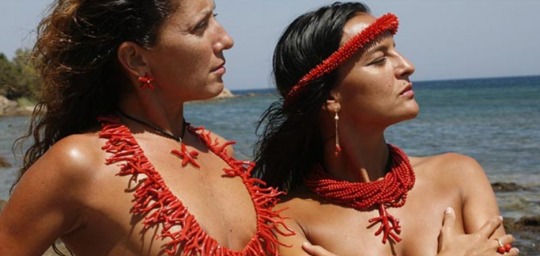
How has the profession of coral cutter evolved over time in response to environmental challenges and conservation concerns? What rules and restrictions govern the practice?
I helped put an end to indiscriminate fishing with the St. Andrew's Cross, a practice employed by large Italian trawlers which for decades had devastated not only red coral, but all underwater ecosystems. When they entered Corsican waters, they towed a one-ton iron bar to rake the seabed. These trolling machines were destructive, veritable bulldozers of the seabed. I remember discovering soiled cliffs: between 90 and 150 meters below the surface, everything had been destroyed. A truly gloomy, lunar universe, in stark contrast to the colorful environment I'd known until then. This massacre went on for 12 years, until Admiral Tripier of Toulon was alerted by an article I'd written for Agence France-Presse, and decided to have the trawlers boarded.
Back in the pioneering days, my father, a scuba diver in Monaco, helped set up the aquarium and provided underwater species in collaboration with Prince Rainier. Thanks to the observations I made during my many dives, I was able to work closely with Monaco's scientific center. For six consecutive years, I have provided the Oceanographic Museum with a one-kilogram coral colony for the "Mediterraneo" exhibition. According to their studies, this colony is around 300 years old!
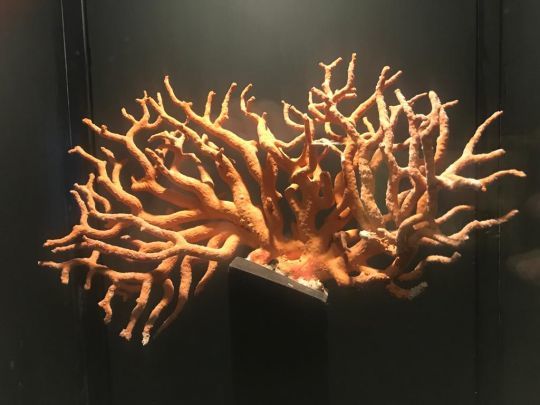
In these deep waters, corals escape the multiple aggressions faced by other coral reefs on the planet: climatic conditions, pollution, excessive fishing, urbanization of coastlines... And let's not forget certain lobbies who, thanks to the tourism industry in particular, generate considerable profits by exploiting the appeal of coral, which underlines the imperative need to protect it.
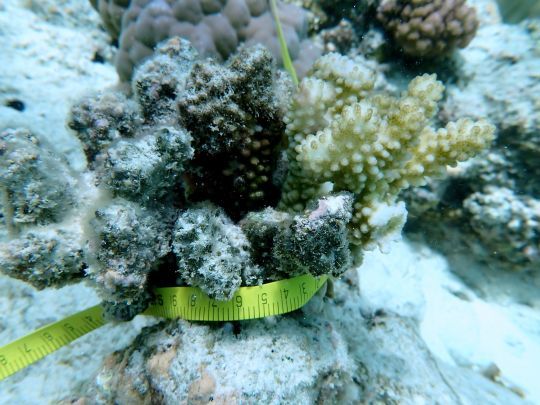

Corallium Rubrum remains the only marketable species, not at all endangered but still vulnerable. That's why I voluntarily banned fishing above 50 meters: it took me 18 years of fighting to prevent piracy. Nevertheless, red coral fishing is strictly regulated. For the whole island, the Direction des Affaires Maritimes has granted only 7 derogations for the year 2023 for the practice of this selective fishing. Each year, a new decree is published authorizing professional fishermen to fish for red coral in Corsican territorial waters. Derogations can be withdrawn in the event of depletion of the resource or infringement of fishing regulations. Sometimes, we have to admit that we are subject to restrictions that can be restrictive because they don't take into account the practical realities of our trade. For example, the requirement to return at a specific time with our boat is sometimes unachievable. Although agents are responsible for monitoring our activities by recording our post-harvest returns via VHF or e-mail, it's important to understand that we practice a free trade. When we emerge from the water after a dive lasting several hours, our blood is saturated with micro-bubbles, so we must avoid any violent effort or intense emotion, or risk decompression sickness. Consequently, after a physically demanding dive, our priority is often to have lunch and rest in a turquoise cove before heading back to port! So it's simply impossible for us to keep up with laws that don't reflect the coherence of our profession.
As the bearer of an ancient tradition, how do you see the future of red coral harvesting in Corsica? What are your hopes and concerns for this activity?
Here again, administrative constraints pose numerous obstacles to the entry of new people into this profession. It is essential to obtain a hyperbaric classification and a professional maritime booklet, which proves to be a complex task. At one time, it was quite common to meet sailors who had been underwater hunters and who were then seduced by the idea of spending a season as a crew seaman. It always went off without a hitch. Nowadays, many people hold diplomas, but don't necessarily have the required level of competence at sea. The job is inherently dangerous, requiring a firm grasp of how to steer against winds and currents. We aspire to work alongside qualified professionals, but find it difficult to recruit loyal team-mates, which has a negative impact on our working seasons. To alleviate this problem, many coral divers opt for partnerships in which they hire a third diving teammate to keep watch over the coral diver on the surface.
There's no doubt that my primary concern is to protect the species. Recently, a meeting was held in Rome where the Americans considered classifying Corallium Rubrum as a remarkable species. In my opinion, this would be the worst decision to make, as it would make the species invaluable, opening the door to piracy activities!
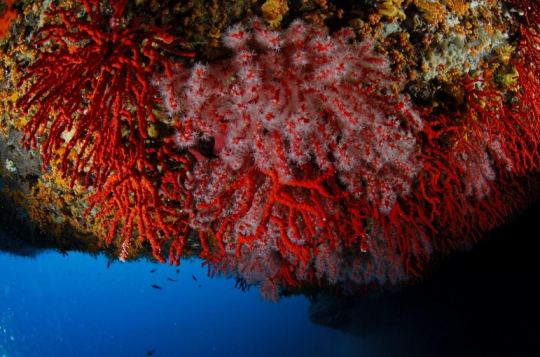
As you will have gathered, red coral harvesting in Corsica, rooted in centuries-old tradition, is governed by strict regulations designed to preserve the unique Corallium Rubrum species. Although red coral is not an endangered species, it remains part of a fragile balance that must be protected. Coral reefers, of whom Jean-Philippe Giordano is one, perpetuate their trade while respecting the fundamental principles of safety, selective fishing and the valorization of fishing products. Despite administrative hurdles and recruitment challenges, their dedication to the preservation of red coral remains an unshakeable component of their activity.

 /
/ 